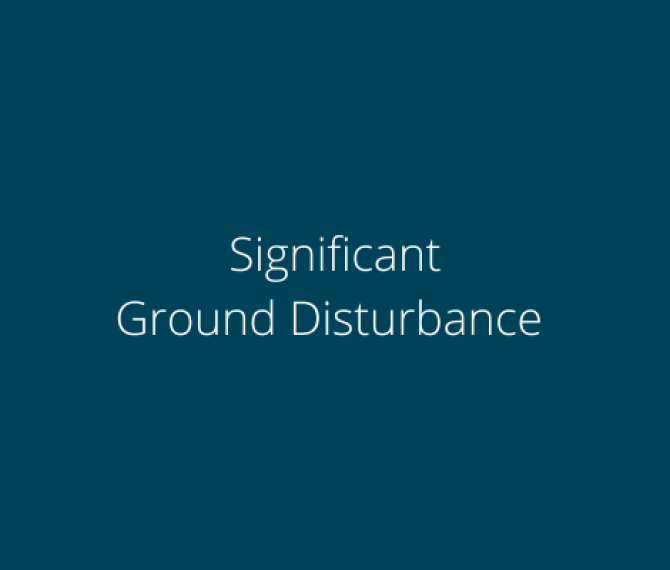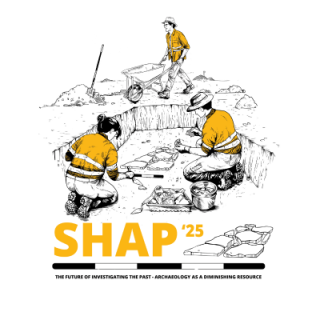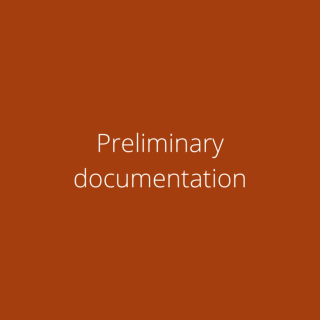Significant Ground Disturbance – Significant Headache
It has now been nine years since the passing of the Aboriginal Heritage Act 2006, and eight years since the Aboriginal Heritage Regulations 2007. However, one widely discussed and employed component of the legislation continues to cause problems for proponents and decision-makers alike.

Significant Ground Disturbance (SGD) is a concept that is embedded in the AHR 2007 which exempts a proponent from having to undertake a mandatory Cultural Heritage Management Plan (CHMP). The principles of SGD are relatively straightforward and closely linked to the two-part trigger mechanism of the CHMP. For a mandatory CHMP to be triggered, an activity must be a listed high impact activity and must also be located within an area of cultural heritage sensitivity. Importantly, however, if an area of sensitivity can be shown to have been subject to previous SGD, it is no longer considered to be an area of sensitivity; thereby removing one part of a trigger for a CHMP.
The definition of SGD is theoretically uncomplicated, being the disturbance of the topsoil or top rock layer by machinery. The definition does not include ploughing, but does admit deep ripping to a depth of 60cm. In practice though, the demonstration of such disturbance is extremely difficult, resulting in a number of VCAT decisions that have forced proponents into CHMPs because SGD could not be effectively proven over the entire area of cultural heritage sensitivity in accordance with the precise definition under the Regulations (see the Stanley Pastoral Pty Ltd v Indigo SC 2015 Decision for a recent example).
In 2009, two ground-breaking VCAT decisions (Mainstay Australia Pty Ltd. v Mornington Peninsula SC & Ors, and Azzure Investment Group Pty Ltd v Mornington Peninsula SC) provided some much-needed clarification over the type of evidence that will satisfy VCAT in deliberations over SGD. In the Mainstay decision VCAT concluded that there were four types of evidence that could be provided to demonstrate SGD. These are common knowledge, publicly available records, further information from the applicant, and expert opinion. The Azzure decision, delivered later in the same year, conceded that in the absence of a "smoking gun" contextual and comparative information could be used to argue for SGD. Examples of the latter may include but not be limited to urban context, topography, land use, services, configuration, and remnant native vegetation.
The Mainstay and Azzure decisions were important to heritage advisors and decision makers alike in that they provided a baseline of evidentiary standards, from which to argue SGD. On the other hand, they created a raft of heritage assessments which sought to demonstrate SGD by any means possible, irrespective of its potential damage to Aboriginal heritage, or the risk to a client's project timelines in the event that VCAT failed to accept the heritage assessment's findings.
Heritage assessments arguing for SGD have generally met with three fates:
- Those that have provided comfort for a proponent not requiring a planning permit to continue their work without a CHMP,
- Those that have reached a decision maker as part of a planning permit application, principally a local government authority, and been accepted at face value, albeit occasionally, after minor wrangling, and
- Those that have reached VCAT, either because a decision maker has not accepted the heritage assessment, or more frequently because the application has proceeded to VCAT for other reasons, and have been overturned for lack of appropriate evidence.
Less frequently, the heritage assessments arguing for SGD have been refused by the decision maker for lack of appropriate evidence, or have been accepted by VCAT because there was sufficient evidence to argue for SGD. An example of the latter scenario is the Big Hill Vineyard Pty Ltd v Greater Bendigo CC decision which demonstrated to VCAT that the entire area of sensitivity (but not the entire property) had been subject to previous SGD.
The scenarios described above suggest that demonstrating SGD is fraught with difficulties whenever a decision maker adopts a conservative view of the evidentiary standards. A cursory review of LGA's and their attitudes to heritage assessments arguing for SGD presents a picture of highly diverse approaches. It is well known that some LGAs, have been reasonably conservative in their acceptance of such assessments. On the other hand, we are aware of at least one LGA without a single CHMP, which provides some indication of its attitudes to this matter.
It is also instructive to consider the situation of one regional LGA , which despite administering an area that is moderately developed but covered with areas of cultural heritage sensitivity, has only completed a small number of CHMPs. It is generally known that a large number of assessments have been undertaken in the area which have concluded that gold mining activities have rendered much of the area as significantly disturbed. It is extremely unlikely that VCAT would accept historic gold mining undertaken largely by hand, as evidence of SGD, but this has not been tested at VCAT.
Finally, one LGA, has recently adopted a rather controversial position on the matter by refusing to consider any heritage assessments arguing for SGD. The LGA's position is being defended by the claim that all previous cases brought before VCAT which included SGD assessments were not accepted by VCAT. The LGA claims that it is not an efficient use of its time to consider such applications irrespective of their individual merit.
The discussion above indicates that while there is generally a better understanding of the concept of SGD as an exemption mechanism to avoid a mandatory CHMP, there is considerable disagreement over its appropriate application and implementation. Furthermore (and perhaps more commonly overlooked), the exemption from a CHMP as a result of SGD does not consider the risk of harming Aboriginal heritage, which can be situated either within a disturbed context, or beneath a disturbed context. But the issue of risk and harm is another discussion for another day!
Important Links
- Stanley Pastoral: http://www.austlii.edu.au/au/cases/vic/VCAT/2015/36.html
- Azzure Investment Group Pty Ltd: http://www.austlii.edu.au/cgi-bin/sinodisp/au/cases/vic/VCAT/2009/1600.html?stem=0&synonyms=0&query=mainstay
- Mainstay Australia Pty Ltd: http://www.austlii.edu.au/cgi-bin/sinodisp/au/cases/vic/VCAT/2009/145.html?stem=0&synonyms=0&query=mainstay
- Big Hill Vineyard Pty Ltd: http://www.austlii.edu.au/cgi-bin/sinodisp/au/cases/vic/VCAT/2015/397.html?stem=0&synonyms=0&query=big%20hill






